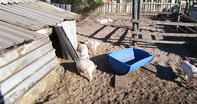The pig farming industry of South Africa has changed quite drastically over the last few decades. The world's climate is getting warmer and drier and agriculture is under more pressure to produce nutritious and cheap food for Earth's growing population.
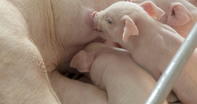
Despite this, the "developed world" is throwing away a third of the food that is grown for human consumption, while many countries are still desperately short of protein to provide the full range of essential amino acids needed in a human’s diet.
The world's meat industry is adapting as a natural consequence and is producing a range of proteins to fill the major needs in poor-resource communities.
Main Meat Sources of the World
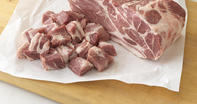
Total global meat production is reliably recorded and reported by the Food and Agriculture Organization of the United Nations (FAO). In 2017 a total of over 350 million tonnes of meat protein were consumed. The world's most popular meats were in order of production (millions of tons) were: pork (112), poultry (107) bovines (88), sheep, goats, ostriches and then several hunted or herded species which include reindeer, moose, feral and wild boar, antelope, buffalo and African buffalo and kangaroo.
The other protein source in the human protein diet is seafood. This includes fish, crustaceans, molluscs contributing a total of 170 million tonnes of animal protein. Other food groups such as vegetables, fruit, green salads, nuts, grains, milk, eggs, cheese and bio-technical creations from laboratories (these may become major players in coming years) have a vital role to play in providing other foodstuffs: Carbohydrates as energy sources, fibre, minerals, vitamins and clean water and usually some protein.
Meat Consumption in South Africa
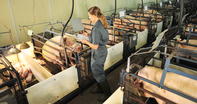
It is said that South Africa (SA) has no more than 15% arable land and the increasing demand for human food necessitates animal production with high-yields in intensive systems. To supply good quality protein for 55 million people, pigs and poultry are being farmed successfully in "factory farms" in South Africa, yet only 0.5% of the world's pork is produced in South Africa. South Africa consumes about 200 000 tonnes of pork meat (fresh and processed) per year.
Our own production amounts to 182 000 ton (2.6 million slaughter pigs with an average carcass mass of 70 kg) and we import another 25 000 tonnes. This represents just under 4 kg per person per year more than the African non-Muslim population but insignificant compared to people in Asia, Western Europe and North America. Import countries include Germany, France, Spain, Canada, Brazil and the USA. Frozen and specially treated cuts like spare ribs made up 60% of the imports.
South Africa exports a small amount of pork to Namibia, Mauritius and Mozambique. Ten times more poultry than pork is consumed in South Africa at a similar price per kilogram indicating a huge potential market for fresh and processed pork products.
Pig Production in South Africa
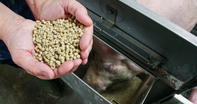
The pig industry in South Africa has three main sectors. Large-scale modern, efficient, intensive production units have between 600 and 5 000 sow units. There is a tendency for farm units to "get big or get out".
The advantages of the economies of scale apply to input costs and marketing. The middle and small commercial pork producers in South Africa are getting fewer and unless they find a niche market or have other income, they are vulnerable to the rising costs of balanced feed which makes up 75% of the running costs in a piggery.
The thousands of small pig farmers with a very low input cost of housing and feed. There is little incentive for them to put up housing and buy balance feed as they have no permanent security of tenure. With shelters from scrap material and expired feed (often low in protein), they can nevertheless make a significant financial contribution to their own family's finances.
